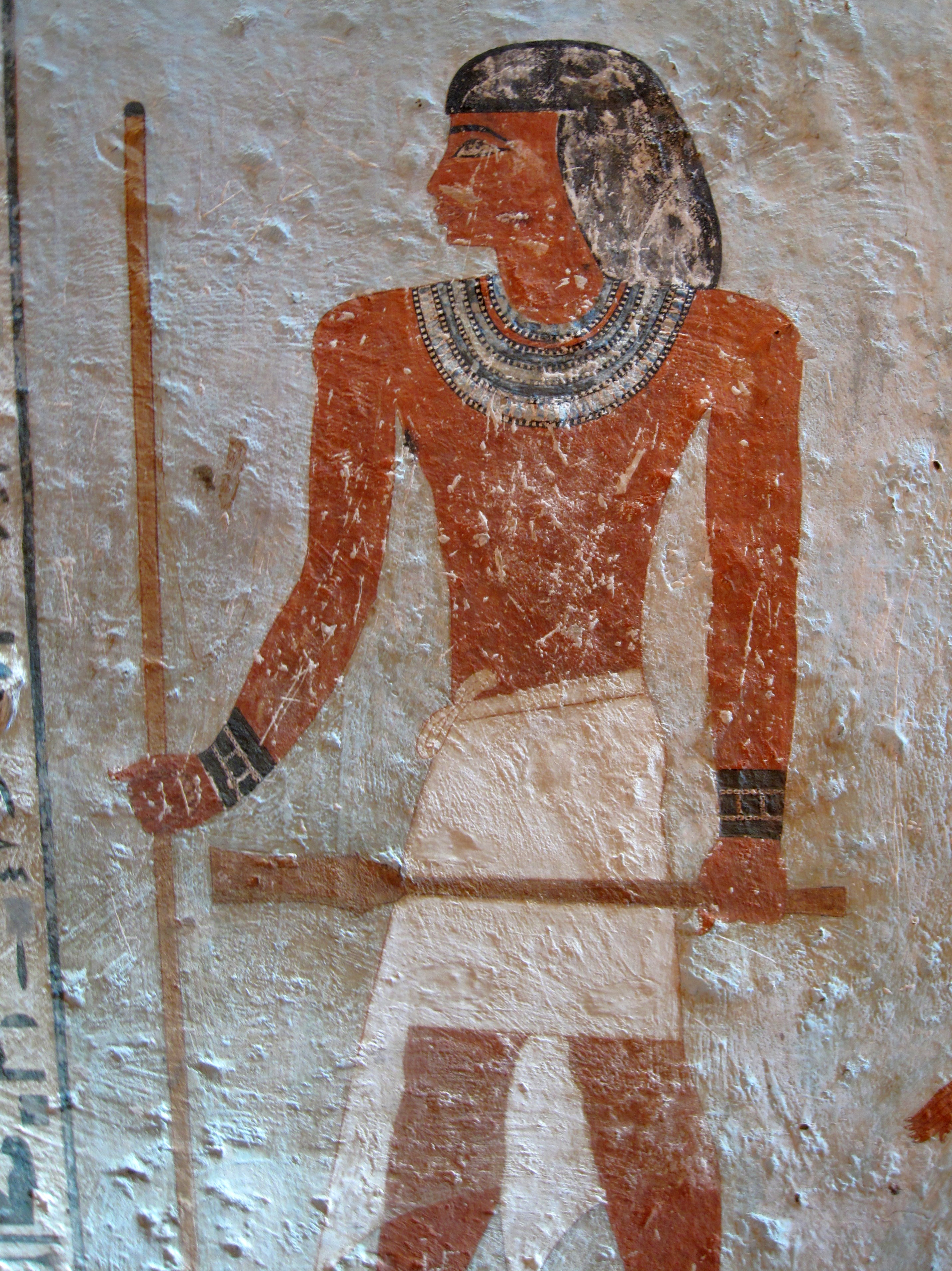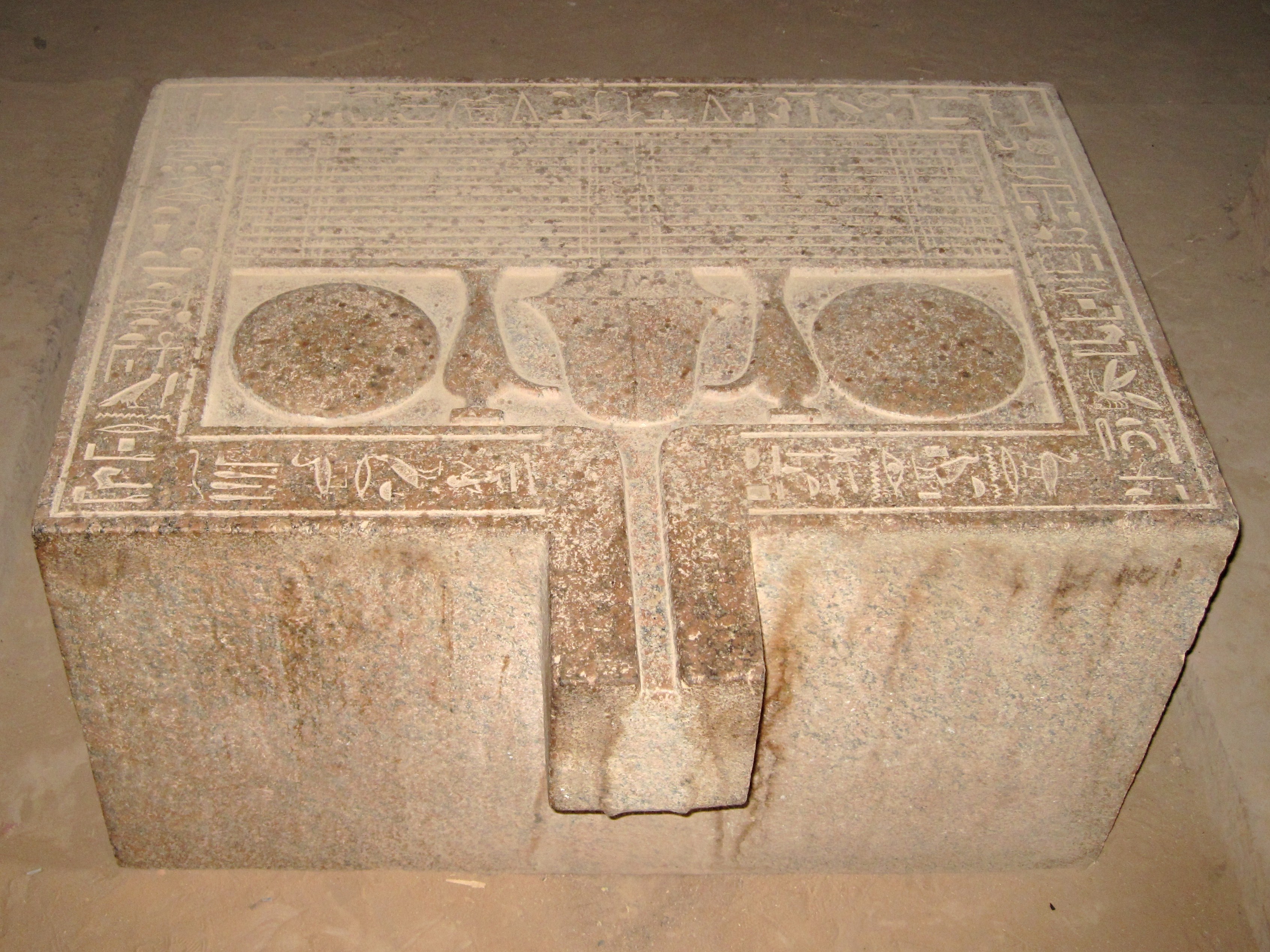Sarenput II on:
[Wikipedia]
[Google]
[Amazon]
Sarenput II, also called Nubkaurenakht (''Nbw-kȝw-rˁ-nḫt'', "Strong is Nubkaure", i.e. Amenemhat II) was an
 Sarenput was the son of Khema, a governor of
Sarenput was the son of Khema, a governor of
Statue of Sarenput II at the British Museum
/ref>). In spite of the tomb's grandness, only the niche and few pillars of the innermost chamber are decorated; nevertheless, the scenes are vividly painted and detailed, chiefly depicting the tomb owner.
 {{DEFAULTSORT:Sarenput 02
Officials of the Twelfth Dynasty of Egypt
Nomarchs
Overseers of the priests of Satet
Overseers of the priests of Khnum
{{DEFAULTSORT:Sarenput 02
Officials of the Twelfth Dynasty of Egypt
Nomarchs
Overseers of the priests of Satet
Overseers of the priests of Khnum
ancient Egypt
Ancient Egypt () was a cradle of civilization concentrated along the lower reaches of the Nile River in Northeast Africa. It emerged from prehistoric Egypt around 3150BC (according to conventional Egyptian chronology), when Upper and Lower E ...
ian nomarch
A nomarch (, Great Chief) was a provincial governor in ancient Egypt; the country was divided into 42 provinces, called Nome (Egypt), nomes (singular , plural ). A nomarch was the government official responsible for a nome.
Etymology
The te ...
during the reign of pharaoh
Pharaoh (, ; Egyptian language, Egyptian: ''wikt:pr ꜥꜣ, pr ꜥꜣ''; Meroitic language, Meroitic: 𐦲𐦤𐦧, ; Biblical Hebrew: ''Parʿō'') was the title of the monarch of ancient Egypt from the First Dynasty of Egypt, First Dynasty ( ...
s Senusret II and Senusret III
Khakaure Senusret III (also written as Senwosret III or the hellenised form, Sesostris III) was a pharaoh of Ancient Egypt, Egypt. He ruled from 1878 BC to 1839 BC during a time of great power and prosperity, and was the fifth king of the Twelfth ...
of the 12th Dynasty
The Twelfth Dynasty of ancient Egypt (Dynasty XII) is a series of rulers reigning from 1991–1802 BC (190 years), at what is often considered to be the apex of the Middle Kingdom (Dynasties XI–XIV). The dynasty periodically expanded its terr ...
.
Family and career
Elephantine
Elephantine ( ; ; ; ''Elephantíne''; , ) is an island on the Nile, forming part of the city of Aswan in Upper Egypt. The archaeological site, archaeological digs on the island became a World Heritage Site in 1979, along with other examples of ...
during the reign of Amenemhat II, and of his wife Satethotep, as well as the nephew of the nomarch Sarenput I. Among his titles, he was nomarch
A nomarch (, Great Chief) was a provincial governor in ancient Egypt; the country was divided into 42 provinces, called Nome (Egypt), nomes (singular , plural ). A nomarch was the government official responsible for a nome.
Etymology
The te ...
of the 1st '' nomos'' of Upper Egypt
Upper Egypt ( ', shortened to , , locally: ) is the southern portion of Egypt and is composed of the Nile River valley south of the delta and the 30th parallel North. It thus consists of the entire Nile River valley from Cairo south to Lake N ...
(" Land of the Bow"), mayor of Elephantine, high priest, overseer of the priests of Satet
Satet, Satit or Satjet, Satjit in Ancient Egyptian ( or ', ."Pourer" or "Shooter"), Greek: Satis, also known by numerous related names, was an Upper Egyptian goddess who, along with Khnum and Anuket, formed part of the Elephantine Triad. A pro ...
and Khnum
Khnum, also romanised Khnemu (; , ), was one of the earliest-known Egyptian deities in Upper Egypt, originally associated with the Nile cataract. He held the responsibility of regulating the annual inundation of the river, emanating from the ca ...
, and "leader of the border patrols at the narrow door of the southern lands". He is attested as nomarch for at least 12 years between Year 4 of Senusret II and Year 8 of Senusret III.
Sarenput II had a younger brother, Shemai, whose undisturbed burial was discovered in March 2017 by University of Jena
The University of Jena, officially the Friedrich Schiller University Jena (, abbreviated FSU, shortened form ''Uni Jena''), is a public research university located in Jena, Thuringia, Germany.
The university was established in 1558 and is cou ...
in the Qubbet el-Hawa
Qubbet el-Hawa or "Dome of the Wind" is a site on the western bank of the Nile, opposite Aswan, that serves as the resting place of ancient nobles and priests from the Old Kingdom of Egypt, Old and Middle Kingdom of Egypt, Middle Kingdoms of anc ...
area of Aswan, the same area where Sarenput had his tomb. Shemai's mummy was found and covered with a "beautiful mask
A mask is an object normally worn on the face, typically for protection, disguise, performance, or entertainment, and often employed for rituals and rites. Masks have been used since antiquity for both ceremonial and practical purposes, ...
". Sarenput also had a daughter, Sattjeni, who has been identified as the mother of two subsequent nomarchs at Elephantine: Amenyseneb and Heqaib III.
Like many of his predecessors, Sarenput made additions at the sanctuary of Heqaib at Elephantine: in particular, he ordered a shrine for his father Khema and one for himself, containing a statue of Khema and one of Sarenput II respectively. The two statues are stylistically different, with the former (Khema) being idealized and typical of the reign of Amenemhat II while the latter (Sarenput II) is more expressive, realistic and detailed, reflecting the style in use during the subsequent reign of Senusret II: both statues are considered to be masterpieces of the Middle Kingdom sculpture. Another statue depicting Sarenput II and probably coming from his tomb, is again stylistically typical of the reign of Amenemhat II.
Tomb
Sarenput II built for himself the finest and largest tomb ofQubbet el-Hawa
Qubbet el-Hawa or "Dome of the Wind" is a site on the western bank of the Nile, opposite Aswan, that serves as the resting place of ancient nobles and priests from the Old Kingdom of Egypt, Old and Middle Kingdom of Egypt, Middle Kingdoms of anc ...
(No. 31). After crossing a courtyard, a hallway lead to a large hall whose ceiling is supported by six pillars. Then another hallway – with several niches containing osirian statues of Sarenput on both sides – lead to the inner room, with four pillars and a niche once hosting a granodiorite
Granodiorite ( ) is a coarse-grained (phaneritic) intrusive igneous rock similar to granite, but containing more plagioclase feldspar than orthoclase feldspar.
The term banatite is sometimes used informally for various rocks ranging from gra ...
statue whose remains are now in the British Museum
The British Museum is a Museum, public museum dedicated to human history, art and culture located in the Bloomsbury area of London. Its permanent collection of eight million works is the largest in the world. It documents the story of human cu ...
(EA98/ref>). In spite of the tomb's grandness, only the niche and few pillars of the innermost chamber are decorated; nevertheless, the scenes are vividly painted and detailed, chiefly depicting the tomb owner.
References